Founded as the Data Institute Business School, Goodwin has spent over 25 years evolving into a dynamic university. While older institutions may rely on tradition, Goodwin’s unique advantage lies in its ability to continuously shape its own story — driven by students, graduates, faculty, and staff.
As higher education faces ongoing challenges, Goodwin University continues to thrive. This resilience raises an intriguing question for prospective students and educators alike: What sets Goodwin apart from other institutions?

Central to this narrative is the Goodwin University Institute for Learning Innovation (GUILI), where teaching excellence in higher education is being redefined. By championing the Universal Design for Learning (UDL) Framework, GUILI is enhancing learning experiences for students across academia.
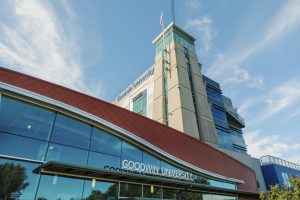
Led by Dr. Diana J. LaRocco (Associate Provost for Learning and Teaching and Dean of the School of Applied Liberal Arts and Sciences), GUILI’s UDL Institute provides accessible resources, such as UDL training programs and fellowships, the 9 in 9 Webinar Series, a UDL podcast, and countless online tools.
As Goodwin’s third UDL Conference approaches on September 27, 2024, GUILI reflects on its achievements and looks toward a future where the transformative benefits of UDL breathe new life into higher education — fostering inclusive scholarly experiences and preparing students for success in the 21st century.
Addressing accessibility
Today’s challenges in higher education underscore the need for reform. As enrollment and retention rates fall — 2024 reports show up to 40% of undergraduates abandoned their studies — students cite high costs, lack of relevance, inadequate accessibility, and disengagement as significant deterrents.
While the factors contributing to this crisis are complex, the solutions offered by UDL are comprehensive and transformative. A framework grounded in the principles of inclusion, equity, and flexibility, UDL is designed to meet the diverse needs of all learners.

Encouraging versatile means of representation, expression, and engagement, UDL empowers educators to create and implement curricula that accommodate diverse learning styles and preferences. In addition to supporting students with documented learning needs, the framework helps reduce hurdles for all students, including those struggling due to language barriers, socio-economic difficulties, and other challenges.
Dr. LaRocco notes that reducing student barriers has become increasingly urgent over the past five years. “Looking at trends in education — especially post-COVID — it’s come to the forefront that there is a lot of disparity in what we do. It’s not just about accommodating students with specific needs or disabilities. It’s about everybody.”
Since becoming a University hallmark in 2016, Goodwin’s commitment to UDL has reflected its broader mission of fostering inclusive and accessible academic environments for all learners. As Dr. Robert LeGary, Jr., Associate Professor and Program Director for Teacher Leadership (M.Ed.), notes, “As an open-access, open-admissions university, accessibility is embedded and infused in our culture. It’s part of what we do and how we show up in our classrooms. We integrate, cultivate, and refine our teaching through UDL, ensuring that every student has the opportunity to succeed.”
Defying outdated systems
By inspiring educators to reinvent their practices and remove barriers, UDL doesn’t only reframe accessibility — it helps rectify longstanding deficits perpetuated by outdated educational systems.

Reflecting on the broader implications UDL has in academia, Senior Teaching Fellow Dr. Liz Lane emphasizes how the framework challenges antiquated biases and promotes antiracist teaching practices. “High schools and elementary schools have set up frameworks that — at least in theory — will address the needs of diverse learners. But historically, there are power dynamics in higher education that don’t meet the needs of an equitable education.” She continues, “UDL is a tool to address all our unconscious biases and the hierarchic structures in higher education so we can decolonize a majority power dynamic.”
Collaborating across academia
Beyond improving higher education for diverse learners and thinkers, UDL challenges educators to emerge from their comfort zones — encouraging collaboration among instructors of all disciplines.
Dr. LeGary highlights this as one of the unique advantages of the framework. “UDL gives educators a common language to discuss removing barriers, supporting students, and increasing inclusivity.”

For GUILI leadership, this collaborative capacity has far-reaching implications. “We’re not only training our faculty but also teaching others in higher education,” explains Dr. LaRocco.
With professionals from institutions worldwide seeking UDL training through GUILI, LaRocco takes pride in witnessing the experience spark professional growth. “Faculty often have ‘ah-ha’ moments when they reflect on their learning. It helps them empathize with students and rethink their teaching methods. These moments fuel what we do as educators.”
Ask Goodwin: How has UDL transformed your classroom?
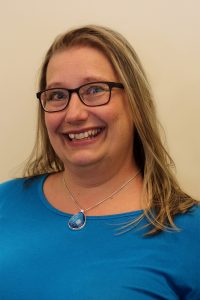
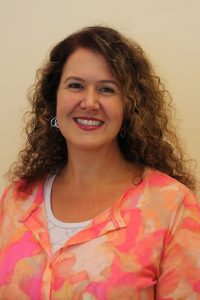
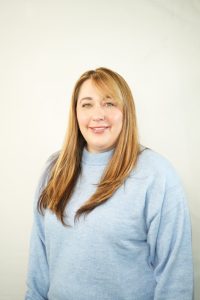
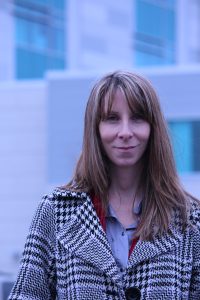
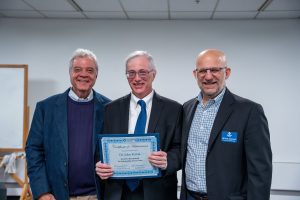
Ready to reimagine what teaching and learning look like? Discover how the Goodwin University Institute for Learning Innovation can help transform your classroom!
Leading the way at Goodwin
On the cusp of the third annual UDL Conference, Dr. LaRocco anticipates it will be the best attended yet, thanks partly to its unique dual purpose as the capstone of GUILI’s landmark 9 in 9 Webinar Series.
Delivered through free live Zoom sessions and available on YouTube, the nine-month series featured presenters across disciplines and universities — focusing on timely topics like neurodiversity, artificial intelligence, and executive functioning through a UDL lens.

The series was an outgrowth of enduring efforts to put innovative teaching on the radar. “There was a call for proposals in the journal New Directions for Teaching and Learning,” LaRocco recalls. “I talked to Dr. LeGary, and we decided to apply to edit one of the journal’s international editions. We asked people to submit article ideas for the edition and, wonderfully enough, we got an amazing group.”
After publishing the special edition, LaRocco and LeGary decided to take the project to the next level. “We thought, wouldn’t it be cool if the contributors could do workshops on the topics from their journal articles?” Dr. LaRocco reflects. “We realized we could do a webinar series. Everyone who participated in the journal agreed, and we added a presenter from a previous conference.”

Expanding access to the journal’s research, the 9 in 9 Series was pivotal in GUILI’s rise as a UDL leader. “I think it put us on the map as a scholarly platform for UDL application in higher education,” Dr. LeGary adds. “It’s in the theme of faculty development, not only here but throughout academia.”
Embracing UDL
The continuing efforts of GUILI present a promising future for UDL in higher education. “When you do things like hold a conference, you build networks,” Dr. LaRocco explains. “One of the things we’ve been doing all along is build a network of national UDL experts.”
As Goodwin continues making UDL an institutional staple, Dr. LaRocco projects the framework will be integral to adapting higher education to the modern era — complementary to the emerging technologies influencing budding professionals today. “UDL and AI are a match made in heaven,” she cites. “It’s only going to continue to grow like other technologies. AI will change how we approach learning and teaching, and that’s a good thing.”

Still, the brightest promise of UDL lies in its potential to breathe new life into higher education for students and instructors alike. “UDL will allow universities to thrive by helping us meet learners where they are,” Dr. LeGary concludes. “It’s so necessary if you want to keep students and have them complete their programs. You have to embrace it.”
At Goodwin University, we believe students deserve more from higher education. Learn more about joining the Goodwin community today!
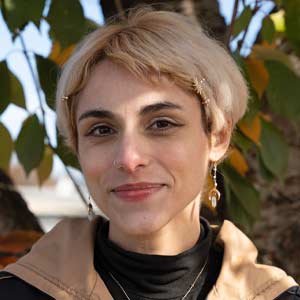
Bri Gagné is a marketing content writer at Goodwin University, bringing backgrounds in literary studies, creative storytelling, Universal Design for Learning (UDL), and social justice. They earned their bachelor’s degree in English Literature and Film Studies from University of Connecticut and a master’s in education from Eastern Connecticut State University.
After teaching English abroad and locally, Bri transitioned to a full-time writing career, contributing to the University’s educational narratives and brand-building efforts. They plan to begin their Master of Fine Arts in creative writing in 2025.

